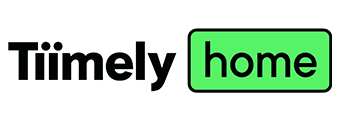
When the topic of conversation drifts towards investing in apartments or houses, it usually generates some debate amongst landlords.
It’s often a firmly divided camp, with those who believe that a property’s value is in the land on one side. On the other side, you’ll find those who believe that a property’s individual characteristics – such as location and number of bedrooms – are far more important than simply the dwelling type.
Many first-time investors assume houses are always the better investments because they have land, and while this can ring true, as a growing number of Australians have come to prefer living closer to the centre of town, the patterns of growth in property values has changed.
Rather than asking "Should I invest in a unit or a house?", you should be asking yourself "What type of property will deliver a bigger return on investment in the long term?"
Growth vs yield
An important distinction for any potential investor to grasp is the distinction between growth and yield. Growth refers to the underlying value of the land itself, whereas the yield refers to the improvements made to the property. When people are looking to invest in a house, they are more preoccupied with its growth potential, whereas investors in apartments more often look to the improvements that make up the quality of the apartment itself.
A quality piece of land – when you’re buying a house – always has that underlying growth potential. But when it comes to apartments the potential investor has to be a little more discriminating.
What type of apartments make the best investment?
If you’re going down the apartments path, it’s very much about buying that older style boutique apartment. More modern high rise apartments have a relatively large number of apartments crammed onto a relatively small parcel of land, so there is an inherent limit to the kind of growth value that an investor will get out of them.
When you go down the path of an art deco or a 1960s style block, if you’re selecting the right asset, getting that notional land value up to 40-50% of the actual purchase price is very much achievable – and that’s where you’ll get the real growth kicking in for you.
Apartment location
Location is important for apartments, and not just the location of the block itself, but the location of the apartment within the complex. What’s happening in the surrounding development? Is it too close to some adjoining uses that might be putting prospective buyers or tenants off? Some people don’t want to be too close to a school or a train line.
The other really important thing from from an apartment perspective is the position of the apartment within the block because it can be dark, it can be overlooked by another building, it can be near a driveway, it can be near rubbish bins or the lift – all those things can impact upon a property’s potential for growth, but also tenant demand.
Trends in houses vs apartments
In terms of property prices, house prices generally always outperform apartment prices because of the land factor. According to CoreLogic's Hedonic Home Value Index May 2023, the national median value for units is $596,308 while the national median value for houses is $760,137.
However, in terms of rental growth, units are currently outperforming houses.
"The larger rise in unit rents continues a trend evident since early 2022, when unit rents started to rise at a faster rate than house rents, reversing the earlier trend of weaker growth in the unit rental sector through the worst of the pandemic," said CoreLogic's Research Director Tim Lawless.
“It’s likely rental affordability is playing a role; in early 2022 unit rents were around $70 a week cheaper than house rents, however, with unit rents rising much faster than house rents, that gap has narrowed to just $20 a week in April,” he said.
“There is also the additional rental demand from overseas migration, especially students, which tends to be more pronounced in inner city areas as well as precincts close to universities and transport hubs that are typically associated with higher density styles of rental accommodation.
“Another factor playing out is a lack of new unit supply. Medium to high density dwelling approvals have mostly held below average since 2018, setting the scene for a chronic undersupply across the medium to high density sector a few years from now.”
Pros and cons of houses
Pros of houses
- Capital growth. Houses offer greater potential for capital growth than apartments because land value appreciates over time. There can be some exceptions to this rule (eg. a block of land in the middle of woop woop is unlikely to be worth as much as an apartment in the heart of Bondi.
- Reliable rental returns. Generally speaking, houses attract longer term tenants like families, couples and people with dogs, who are more reliable and likely to stay for a longer period of time.
- Ability to renovate. Houses allow much more potential for renovations than apartments as there's no need to get body corporate approval, in turn adding value to the property.
Cons of houses
- Require more maintenance. There are lawns to mow, gutters to clean, windows to wash - maintaining a house requires a lot more work than an apartment, so may not be suitable for those who want a low maintenance lifestyle.
- More expensive. Houses are almost always more expensive than apartments in the same area because the land that detached houses are on appreciates in value.
- Bigger bills. Houses are generally bigger than apartments so cost more to heat and cool, and there's generally more furniture to buy.
- Yield. Houses generally have lower rental yield than apartments, but higher capital growth. This is something to keep in mind when choosing an investment property.
Pros and cons of apartments
Pros of apartments
- Apartments are more affordable. Apartments are typically cheaper than detached houses. According to CoreLogic's Hedonic Home Value Index May 2023, the national median value for units is $596,308 while the national median value for houses is $760,137.
- Apartments need less maintenance. Given that you do not have a lawn or garden to tend to, apartments are easier to maintain than detached homes. Furthermore, in most apartments, maintenance is covered and taken care of by the strata or the body corporate. The only thing you have to worry about is the interior of your home. Still, you can seek help from your strata if ever you are having problems with your plumbing and electrical wiring.
- Apartment buildings are more secure. When it comes to security, apartment buildings are substantially better equipped than detached homes. Most apartment buildings have security cameras, alarms, and mechanisms. Some apartments even have secure lifts where you need to swipe a card to access floors.
- Apartments are usually centrally located. Living in an apartment near city-centres gives you unparalleled accessibility to areas of interest, including offices, malls, healthcare facilities, malls, and restaurants. This way, you would not worry about transportation. One catch, however, is that you might find it hard to look for a parking space if you own a car. This is also challenging if you have visitors coming from other cities who may be bringing a vehicle.
- Apartment living provides access to facilities and amenities. A big advantage of living in an apartment building is the access to extra facilities and amenities that you may not get with a detached home. Some apartment buildings have amenities such as swimming pools, gyms, gardens, and covered parking. These are shared spaces that will allow you to socialise with your neighbours.
Cons of apartments
- Less space. You will have a smaller floor size and less storage space. This might be a challenge for bigger families.
- Lack of privacy. With only walls separating you and your neighbour, you will likely see and hear them a lot more than you'd like to.
- Strata. Strata schemes might also be a challenge, given that you will have a shared responsibility with your neighbours for the upkeep and maintenance of communal areas by paying fees. You will also have to abide by the rules set by the owners' corporation. Body corp fees can also be high.
- Increasing supply of apartments. With so many new apartments going up all the time, an increase of supply means lower rental yields, less capital growth and less demand from tenants as there's a bigger selection of apartments to choose from.
So, which should investors go for?
Really, there’s no right or wrong answer. The right choice is context specific.
You typically find that houses, if selected properly, have better growth patterns whereas apartments have better yields – there’s a slightly better rental return on an apartment. But if you select the wrong apartment, there is also a greater possibility for vacancy.
The take home lesson? Do your research, and find out what’s appropriate in your financial, living, and rental circumstances. You can also see the latest investment home loan rates at the market if you are planning to take on a loan for this.
Buying an investment property or looking to refinance? The table below features variable home loans with some of the lowest interest rates on the market for investors.
| Lender | Home Loan | Interest Rate | Comparison Rate* | Monthly Repayment | Repayment type | Rate Type | Offset | Redraw | Ongoing Fees | Upfront Fees | Max LVR | Lump Sum Repayment | Additional Repayments | Split Loan Option | Tags | Features | Link | Compare | Promoted Product | Disclosure |
|---|---|---|---|---|---|---|---|---|---|---|---|---|---|---|---|---|---|---|---|---|
6.19% p.a. | 6.58% p.a. | $3,059 | Principal & Interest | Variable | $0 | $530 | 90% | 90% LVR |
| Disclosure | ||||||||||
6.29% p.a. | 6.20% p.a. | $3,092 | Principal & Interest | Variable | $0 | $0 | 80% |
| Disclosure | |||||||||||
6.34% p.a. | 6.36% p.a. | $3,108 | Principal & Interest | Variable | $0 | $350 | 60% |
| Disclosure | |||||||||||
9.07% p.a. | 9.12% p.a. | $4,048 | Principal & Interest | Variable | $0 | $0 | 90% | |||||||||||||
6.29% p.a. | 6.29% p.a. | $3,092 | Principal & Interest | Variable | $0 | $0 | 80% | |||||||||||||
6.34% p.a. | 6.36% p.a. | $3,108 | Principal & Interest | Variable | $0 | $530 | 90% |
| Promoted | Disclosure |
Collections: Property Investment Buying a home








Share